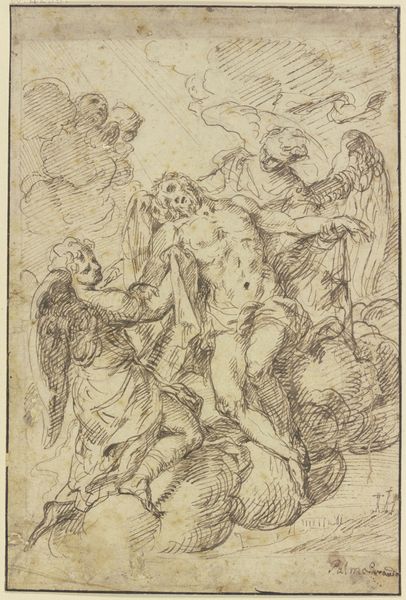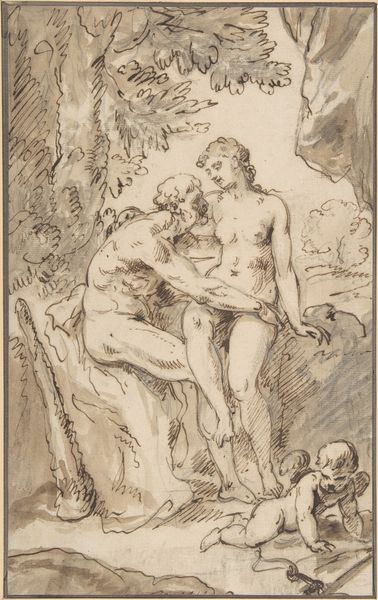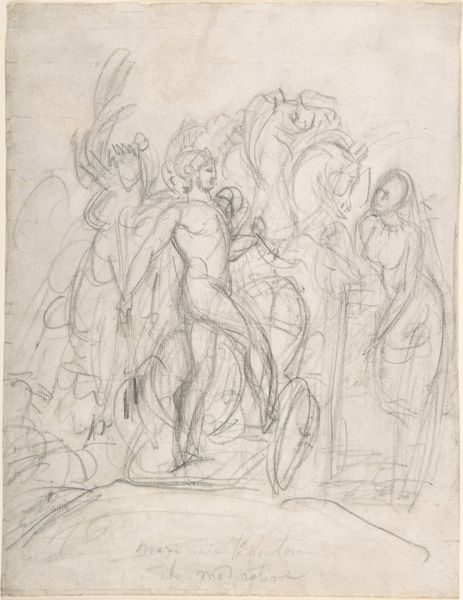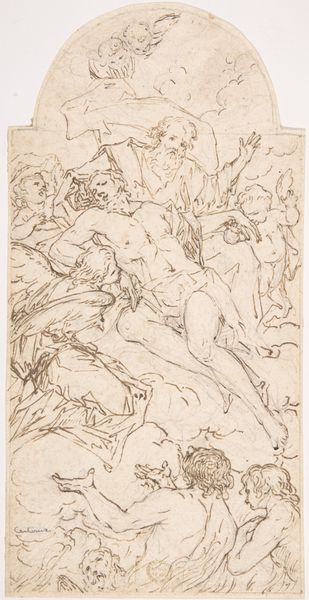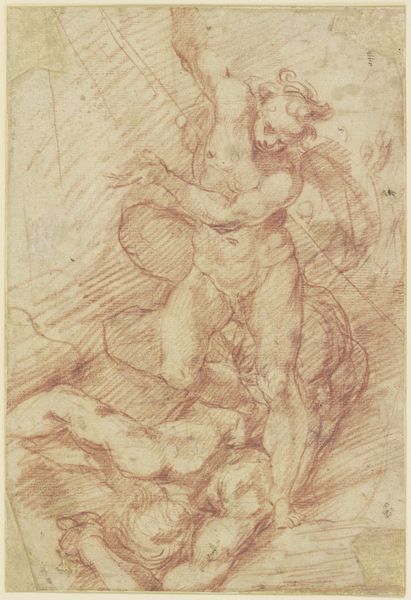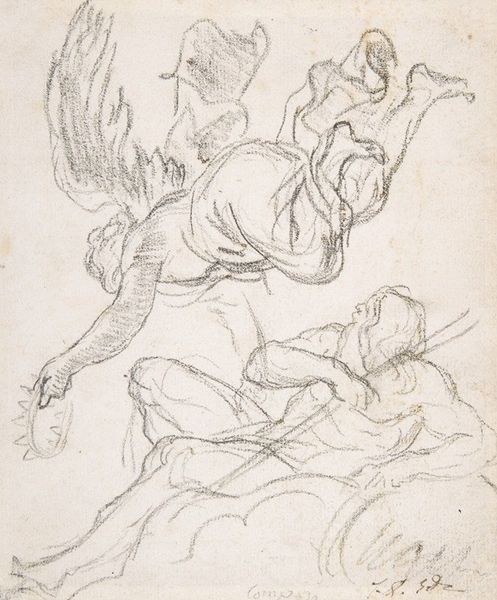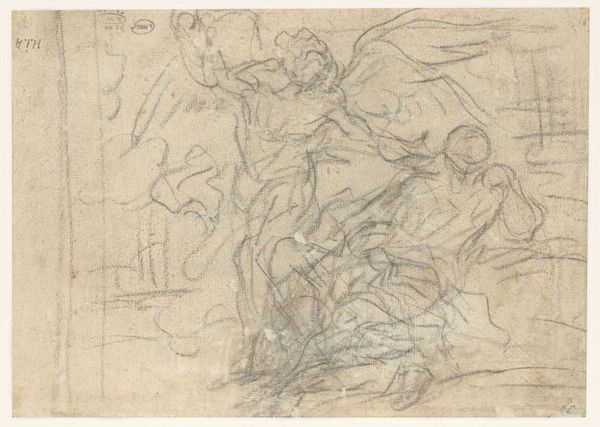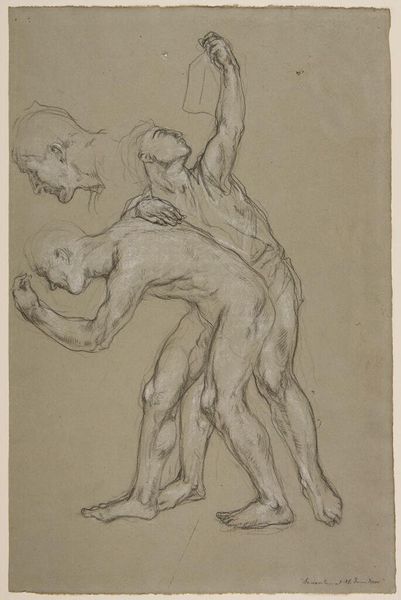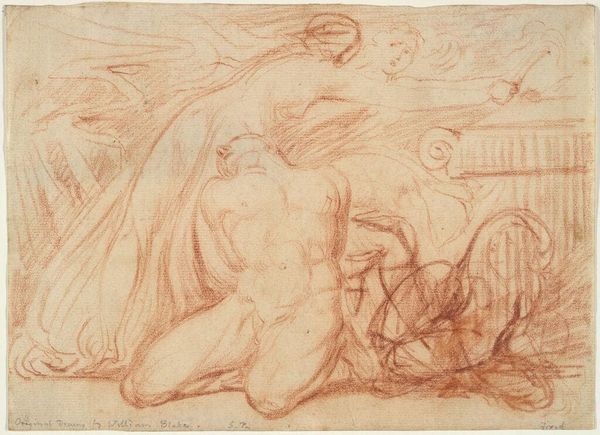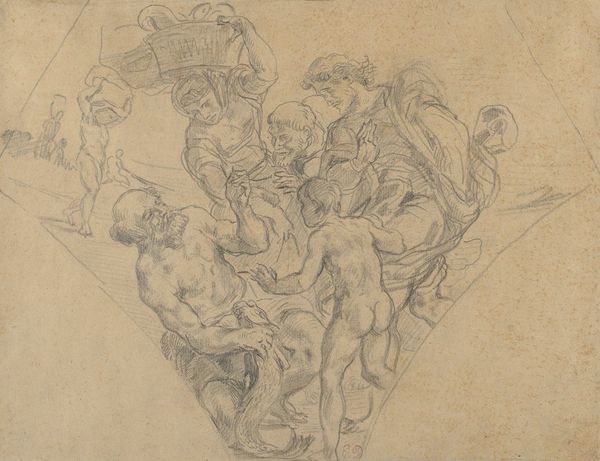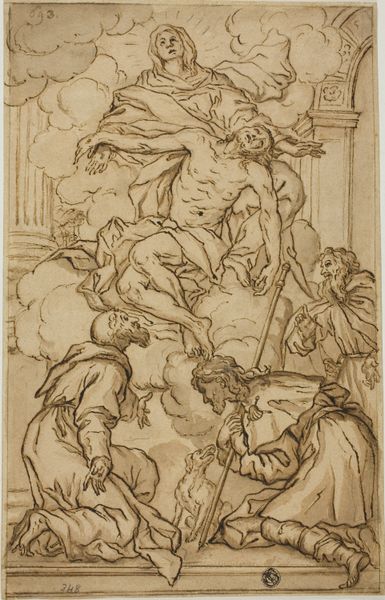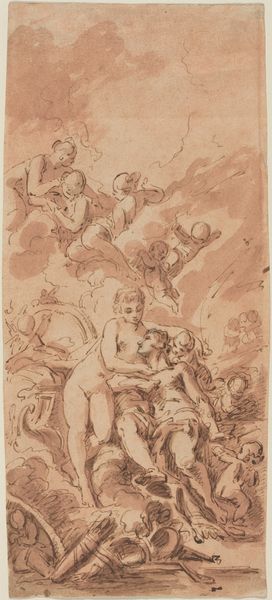
drawing, paper, pencil
#
drawing
#
narrative-art
#
figuration
#
paper
#
pencil
#
history-painting
#
rococo
Copyright: Public Domain: Artvee
Curator: This graphite drawing is titled "Orpheus and Eurydice," created around 1761 by Jean-Honoré Fragonard. My immediate impression is that of swirling drama and the anguish inherent in the myth. Editor: Yes, Fragonard’s handling of the pencil itself speaks volumes. Note the almost frenzied application, particularly in the background hatching; this suggests speed and, perhaps, the urgency of Orpheus’s fateful backward glance. The quality of paper itself might reveal more about its original purpose; was it intended as a preparatory study? The cross-hatching of pencil might reveal a resist strategy if wash were added to complete the final work. Curator: Absolutely. The symbolism is intense here. Orpheus reaches back, desperate, yet the looming darkness surrounding Eurydice emphasizes her impending return to the underworld. It embodies the idea of forbidden love, a popular subject for Fragonard. There’s something eternally tragic in this precise moment of irrevocable loss, isn't there? It shows the universal psychological dread of death. Editor: Indeed. Beyond the personal drama, it reflects anxieties around mortality. I wonder what kind of pencils were available at this time and whether Fragonard chose this medium and support due to economic and resource constraints. Did the available drawing materials enable or restrain the artist’s practice in some way? Curator: Good questions. Thinking of materiality, the paper seems almost fragile given the subject's heavy emotion. But let's go back to Orpheus' lyre that you can make out in the drawing. It's nearly discarded on the ground, and how crucial is this instrument of harmony and order now rendered powerless by grief! It powerfully symbolizes the collapse of his world, the triumph of chaos and eternal suffering! Editor: Yes, the very instrument that enabled him to bargain with Hades is now, literally, cast aside. How fascinating! But also, the relative portability and transportability of the medium enabled art production within a changing and perhaps unsettled labor market, opening up new professional trajectories. Curator: I find that your perspective enriches the piece for me! Now I see, thinking about the materials allows one to better examine the artist’s immediate milieu, not merely his genius or intent. Editor: Exactly! Looking at the physical components is essential for us.
Comments
No comments
Be the first to comment and join the conversation on the ultimate creative platform.
